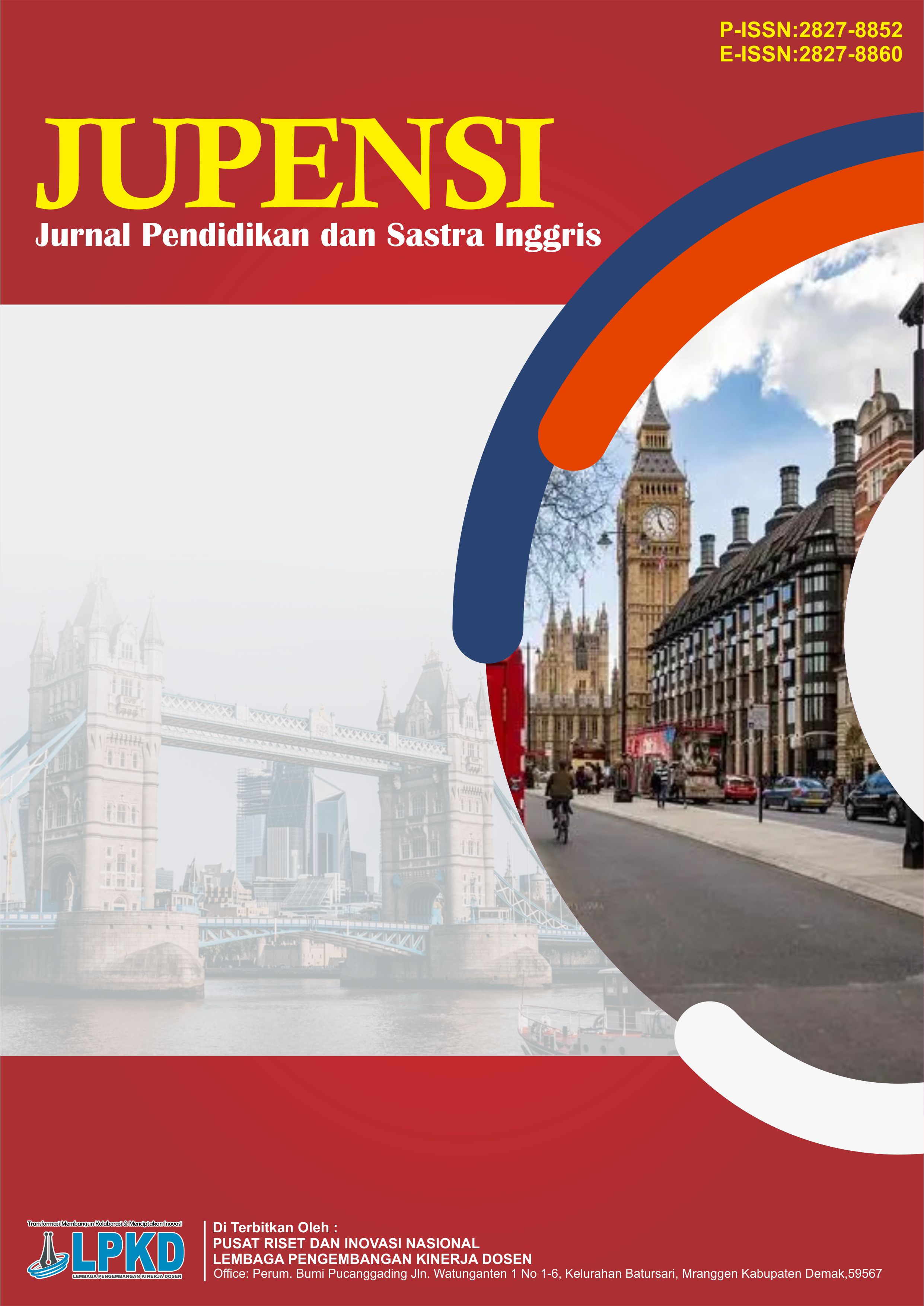Memory and Identity in Thanhaa Lai’s Inside Out and Back Again
DOI:
https://doi.org/10.55606/jupensi.v5i3.6065Keywords:
Diaspora, Hybrid Identity, Memory, Postmemory, Refugee ExperienceAbstract
This study focuses on the memory and identity emerged in Thanhha Lai’s Inside Out and Back Again. The topic underlies memory inherited by a ten-year-old girl, Hà. Ha’s experience as a refugee from Vietnam shaped her hybrid identity later when she lives in the USA. She flees Vietnam after the fall of Saigon and resettles in Alabama. The objective of this study is to describe how memory, especially trauma and displacement, shapes Hà’s evolving identity. Using psychological approach and Postmemory theory, the study results Ha's lived and inherited experiences combine to create a hybrid identity based on cultural continuity, memory, and resiliency. The hybrid identity reflects once that the post memory creates new, blended identities from the shared experiences of past collective trauma or displacement, often in postcolonial or diasporic contexts. This study is relevant for understanding the issue of refugee and diasporic children. Children of refugee may develop hybrid identity that incorporate both their family’s past trauma and their present-day experiences in a new country, leading to cultural shifts, memory conflicts, and a new sense of self.
Downloads
References
Alexander, J. C. (2004). Toward a theory of cultural trauma. In J. C. Alexander, R. Eyerman, B. Giesen, N. J. Smelser, & P. Sztompka (Eds.), Cultural trauma and collective identity (pp. 1–30). University of California Press. https://doi.org/10.1525/california/9780520235946.003.0001
Asri, Z. A. (2025). The trace of memories of the Vietnam War: The struggle facing the trauma in Shirley Ann Grau's Homecoming. Litera Kultura: Journal of Literary and Cultural Studies, 13(1). Retrieved from https://ejournal.unesa.ac.id/index.php/litera-kultura/article/view/71410/51482
Bhabha, H. K. (1994). The location of culture. Routledge.
Caruth, C. (1996). Unclaimed experience: Trauma, narrative, and history. Johns Hopkins University Press. https://doi.org/10.1353/book.20656
Creswell, J. W., & Creswell, J. D. (2018). Research design: Qualitative, quantitative, and mixed methods approaches (5th ed.). SAGE.
Espiritu, Y. L. (2014). Body counts: The Vietnam War and militarized refuge(es). University of California Press. https://doi.org/10.1525/california/9780520277700.001.0001
Fernanda, A. (2017). Transmisi memori dan trauma dalam Mother Land karya Dmetri Kakmi: Kajian postmemory. Jurnal Poetika, 5(2). https://doi.org/10.22146/poetika.30937
Festino, C. G., & Mattos, A. M. de A. (2019). Memory, postmemory, and the role of narratives among women writers from the Adivasi communities of Goa. Retrieved from https://hanvkonn.wordpress.com
Hall, S. (1990). Cultural identity and diaspora. In J. Rutherford (Ed.), Identity: Community, culture, difference (pp. 222–237). Lawrence & Wishart.
Heriyati, Sarumpaet, & Suprihatin. (2019). Speaking through silence: Trauma in literary work. Advances in Social Science, Education and Humanities Research, 391, Proceedings of the International Conference on Business, Economic, Social Science, and Humanities – Humanities and Social Sciences Track (ICOBEST-HSS 2019). Atlantis Press. https://doi.org/10.2991/assehr.k.200108.037
Hirsch, M. (1997). Family frames: Photography, narrative, and postmemory. Harvard University Press.
Hirsch, M. (2008). The generation of postmemory. Poetics Today, 29(1), 103–128. https://doi.org/10.1215/03335372-2007-019
Hirsch, M. (2012). The generation of postmemory: Writing and visual culture after the Holocaust. Columbia University Press.
Hoskins, J. (2014). Vietnamese memories: Popular histories of war and exile. University of California Press.
Lai, T. (2011). Inside out and back again. HarperCollins.
Salim, M. J., & Dave, B. G. (2025). Cultural displacement and identity in the novels of Sheba Karim and Emily Nasrallah. International Journal for Multidisciplinary Research (IJFMR). https://doi.org/10.36948/ijfmr.2025.v07i03.49932
Stuber, D. (2013). Review of Marianne Hirsch, The generation of postmemory: Writing and visual culture after the Holocaust. The Bryn Mawr Review of Comparative Literature Journal, 10(2).
Sugiyono. (2019). Metode penelitian kuantitatif, kualitatif, dan R&D (2nd ed.). CV. Alfabeta.
Vo, L. T. (2020). Asian American studies and the critique of memory: Reconstructing identity after trauma. Temple University Press.
Yang, B., Zhao, D., & Liu, L. (2021). An analysis of Hall's theory of cultural identity and its application in flipped class. In Proceedings of the 2nd International Conference on Language, Communication and Culture Studies (ICLCCS 2021). https://doi.org/10.2991/assehr.k.211025.030
Downloads
Published
How to Cite
Issue
Section
License
Copyright (c) 2025 Jurnal Pendidikan dan Sastra Inggris

This work is licensed under a Creative Commons Attribution-ShareAlike 4.0 International License.









